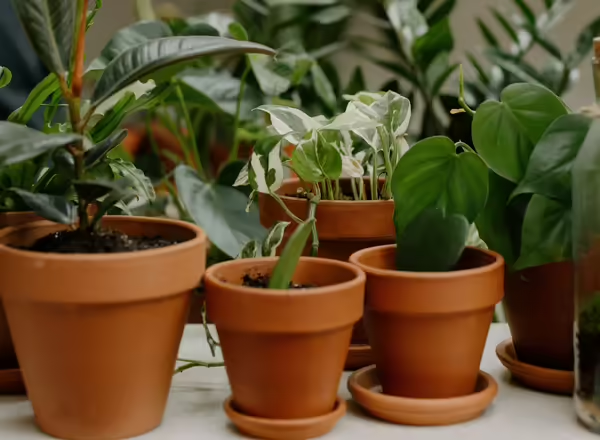
How much water a plant needs is influenced by several factors. Not only is the individual plant size and species important, but also the growing conditions. Light, temperature, humidity, container type, container size, and finally soil type all influence the speed of growth and therefore the amount of water needed.
It is best to look up individual plant species for their watering needs. Typically, you will see the following descriptions under water requirements: plants enjoy constantly moist, but not soggy wet soil; plants prefer to have soil allowed to dry moderately between waterings; or plants prefer very slightly moist soil at all times. The succulents and cacti have differing needs during their growth cycle.

Many houseplants suffer from too much or too little water. Often people want to adhere to a schedule, but this usually does not work. Several factors influence the frequency of watering, including type of plant, temperature, humidity, light, pot size, plant size, potting mix and drainage. The best method for determining when to water is to test the soil with your finger to a depth of two inches. If the soil is dry, it probably needs to be watered. Check your plant regularly. Wilting plants often indicate they need water, but sometimes it can be a symptom of over-watering. A water meter probe can be useful, but may not always be reliable.
If you choose to water from the top, be sure to soak the soil thoroughly and allow the excess water to drain through to the saucer. Then empty the saucer. Do not allow the pot to sit in a saucer of water.
Another method is sub-irrigation. You can place the pot in a few inches of water in a sink or in a saucer. Remove the pot when the moisture has wicked upward through the soil, and it is evident at the top.

- Plants grown in unglazed clay pots tend to need watering more frequently than plants grown in plastic pots, because the clay is porous.
- Only use room temperature water. Do not use cold water.
- Avoid softened water. Let the water sit at least 24 hours to allow the chlorine and fluoride to dissipate.
- Remember to water your plants when they need it and not according to the calendar.
Water absorbing polymers can be added to the potting mix prior to planting to help improve water-holding capacity. This can be useful for plants that have a high watering requirement, or for maintaining plants growing in difficult-to-reach locations. Follow the package directions carefully. Too much or too little will yield disappointing results